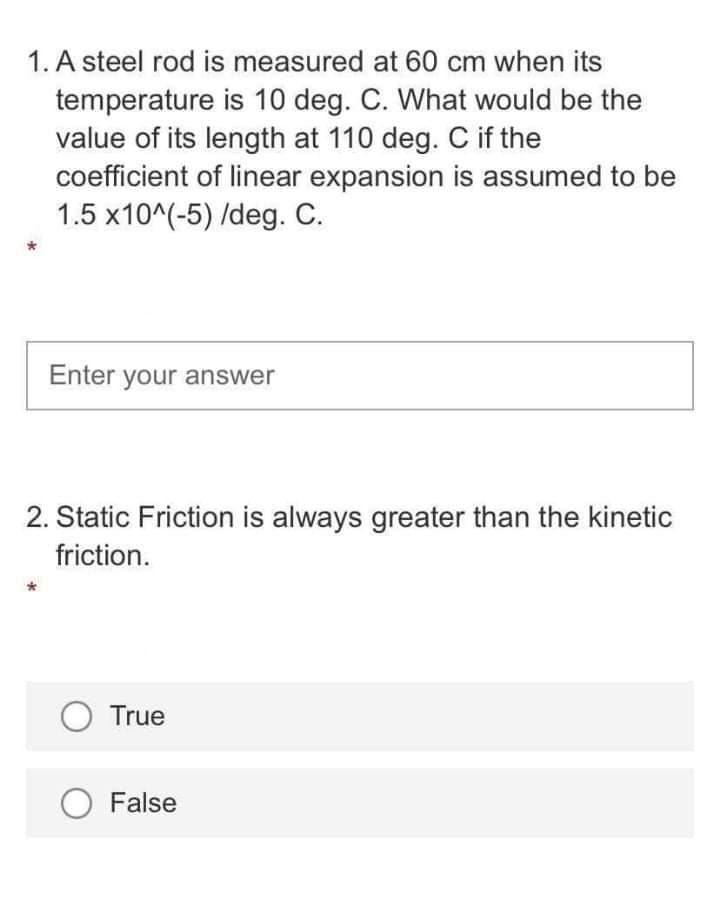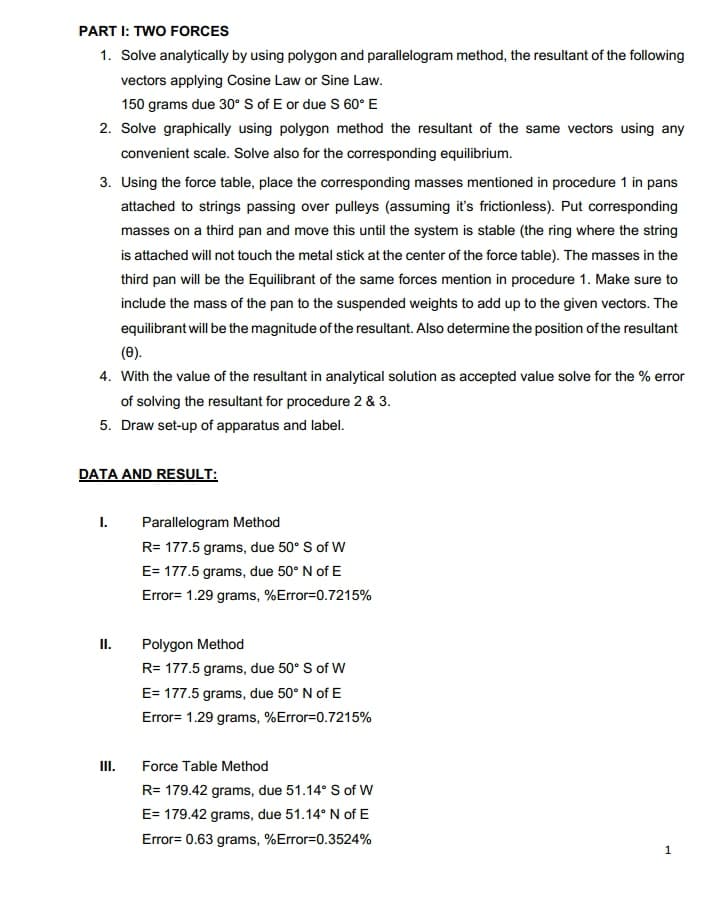1. A steel rod is measured at 60 cm when its temperature is 10 deg. C. What would be the value of its length at 110 deg. C if the coefficient of linear expansion is assumed to be 1.5 x10^(-5) /deg. C.
1. A steel rod is measured at 60 cm when its temperature is 10 deg. C. What would be the value of its length at 110 deg. C if the coefficient of linear expansion is assumed to be 1.5 x10^(-5) /deg. C.
International Edition---engineering Mechanics: Statics, 4th Edition
4th Edition
ISBN:9781305501607
Author:Andrew Pytel And Jaan Kiusalaas
Publisher:Andrew Pytel And Jaan Kiusalaas
Chapter7: Dry Friction
Section: Chapter Questions
Problem 7.57P: The square-threaded screw with a pitch of 10 mm and a mean radius of 18 mm drives a gear that has a...
Related questions
Question
5 & 6

Transcribed Image Text:1. A steel rod is measured at 60 cm when its
temperature is 10 deg. C. What would be the
value of its length at 110 deg. C if the
coefficient of linear expansion is assumed to be
1.5 x10^(-5) /deg. C.
Enter your answer
2. Static Friction is always greater than the kinetic
friction.
O True
O False

Transcribed Image Text:PART I: TWO FORCES
1. Solve analytically by using polygon and parallelogram method, the resultant of the following
vectors applying Cosine Law or Sine Law.
150 grams due 30° S of E or due S 60° E
2. Solve graphically using polygon method the resultant of the same vectors using any
convenient scale. Solve also for the corresponding equilibrium.
3. Using the force table, place the corresponding masses mentioned in procedure 1 in pans
attached to strings passing over pulleys (assuming it's frictionless). Put corresponding
masses on a third pan and move this until the system is stable (the ring where the string
is attached will not touch the metal stick at the center of the force table). The masses in the
third pan will be the Equilibrant of the same forces mention in procedure 1. Make sure to
include the mass of the pan to the suspended weights to add up to the given vectors. The
equilibrant will be the magnitude of the resultant. Also determine the position of the resultant
(0).
4. With the value of the resultant in analytical solution as accepted value solve for the % error
of solving the resultant for procedure 2 & 3.
5. Draw set-up of apparatus and label.
DATA AND RESULT:
I.
Parallelogram Method
R= 177.5 grams, due 50° S of W
E= 177.5 grams, due 50° N of E
Error= 1.29 grams, %Error=0.7215%
II.
Polygon Method
R= 177.5 grams, due 50° S of W
E= 177.5 grams, due 50° N of E
Error= 1.29 grams, %Error=0.7215%
I.
Force Table Method
R= 179.42 grams, due 51.14° S of W
E= 179.42 grams, due 51.14° N of E
Error= 0.63 grams, %Error=0.3524%
1
Expert Solution
This question has been solved!
Explore an expertly crafted, step-by-step solution for a thorough understanding of key concepts.
Step by step
Solved in 2 steps

Knowledge Booster
Learn more about
Need a deep-dive on the concept behind this application? Look no further. Learn more about this topic, mechanical-engineering and related others by exploring similar questions and additional content below.Recommended textbooks for you

International Edition---engineering Mechanics: St…
Mechanical Engineering
ISBN:
9781305501607
Author:
Andrew Pytel And Jaan Kiusalaas
Publisher:
CENGAGE L

International Edition---engineering Mechanics: St…
Mechanical Engineering
ISBN:
9781305501607
Author:
Andrew Pytel And Jaan Kiusalaas
Publisher:
CENGAGE L